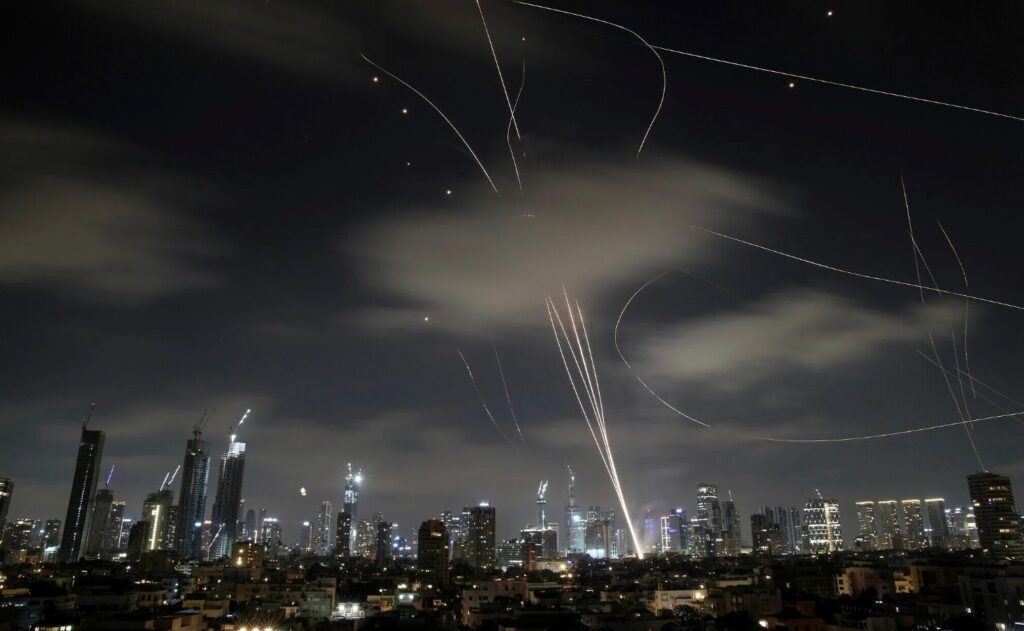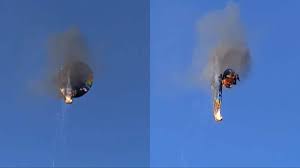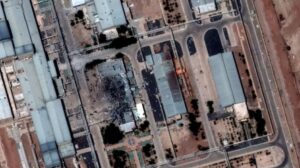Iran-Israel Conflict Escalates: Cluster Munitions Deployed in Ongoing War
4 min read
New Delhi, June 20, 2025 | By India Prime Times Newsroom
As the Israel-Iran conflict enters its eighth day, reports of Iran deploying cluster munitions against Israel have raised global alarm. Israel claims that Iran fired missiles loaded with these controversial weapons, marking their first reported use in the ongoing war. This development, coupled with Israel’s strikes on Iranian nuclear facilities, signals a dangerous escalation in a conflict that has already claimed numerous lives and shows no signs of abating. India Prime Times breaks down the situation, the nature of cluster munitions, and their implications for civilians and international law.
Background of the Conflict
Tensions between Israel and Iran have simmered for decades, rooted in ideological differences, regional power struggles, and Iran’s nuclear ambitions. The current conflict, which began on June 13, 2025, with Israel’s launch of Operation Rising Lion, has seen both nations engage in direct military strikes, moving beyond the shadow war of proxies and covert operations. Israel’s airstrikes have targeted Iranian nuclear sites and military installations, while Iran has retaliated with missile and drone attacks, including strikes on strategic Israeli sites like the Mossad headquarters in Tel Aviv and the AMAN military intelligence complex in Glilot, according to unverified reports.
The conflict has already caused significant casualties. Iran’s health ministry reports over 224 deaths and 1,200 injuries from Israeli strikes, while Iranian attacks have killed more than a dozen in Israel. Both sides have accused each other of targeting civilians, with residential areas in both countries suffering devastating strikes.
What Are Cluster Munitions?
Cluster munitions are weapons designed to disperse multiple smaller explosive devices, known as submunitions or bomblets, over a wide area. These weapons can be delivered via missiles, artillery, or aircraft and are intended to target dispersed military assets like tanks or troop formations. However, their indiscriminate nature makes them highly controversial.
How Cluster Munitions Work
- Delivery Mechanism: A hollow shell, dropped from the air or fired from the ground, breaks open mid-flight, releasing hundreds of submunitions.
- Area of Impact: These submunitions can cover an area equivalent to several football fields, making them effective against spread-out targets.
- Unexploded Ordnance: Some submunitions fail to detonate on impact, leaving behind hazardous remnants that can kill or injure civilians long after the conflict ends.
Dangers to Civilians
The wide dispersal pattern of cluster munitions makes them imprecise, often affecting civilian areas. Unexploded bomblets, resembling small metal objects, can remain active for years, posing a lethal threat to unsuspecting civilians, particularly children. The International Committee of the Red Cross (ICRC) notes that cluster munitions were first used in World War II and were heavily stockpiled during the Cold War for military purposes. However, their humanitarian impact has led to widespread condemnation.
International Law and the Convention on Cluster Munitions
In 2008, the Convention on Cluster Munitions (CCM) was adopted to ban the use, production, transfer, and stockpiling of these weapons. Signed by 123 countries and effective since 2010, the CCM also mandates the destruction of existing stockpiles. However, key nations like the United States, Russia, Ukraine, and Iran have not signed the treaty, allowing them to continue using these weapons. Israel, while not a signatory, has faced international scrutiny for its alleged use of cluster munitions in past conflicts.
Iran’s Alleged Use of Cluster Munitions
On June 17, 2025, Israel accused Iran of firing at least one missile loaded with cluster munitions into central Israel. The missile reportedly dispersed submunitions over an 8-kilometer area, with one striking a home in Azor, causing damage but no casualties. Another strike reportedly hit an Israeli hospital, further fueling accusations that Iran is deliberately targeting civilians.
The Israeli military condemned the attack, describing it as an attempt to “maximize civilian harm.” Iran’s Islamic Revolutionary Guard Corps (IRGC) has not officially confirmed the use of cluster munitions but claimed successful strikes on strategic Israeli targets, including the Mossad headquarters. Visuals circulating on social media, though unverified, show buildings in Tel Aviv engulfed in flames, adding to the escalating narrative of destruction.
Israel’s Response and Regional Implications
Israel has vowed a harsh response, with Prime Minister Benjamin Netanyahu asserting that the country’s military campaign is “ahead of schedule.” Israeli airstrikes have targeted Iranian nuclear infrastructure and military sites, reportedly killing top commanders and atomic scientists. However, a senior U.S. official revealed that President Donald Trump urged Israel to abandon plans to assassinate Iran’s supreme leader, Ayatollah Ali Khamenei, to avoid further escalation.
The use of cluster munitions has heightened fears of a broader regional conflict. The weapons’ indiscriminate nature risks inflaming public opinion and drawing international condemnation. India, which has maintained a neutral stance in the Israel-Iran conflict, has called for de-escalation and urged both parties to prioritize civilian safety.
Global Reactions and the Path Forward
The international community remains divided on the Israel-Iran conflict. While the U.S. has reiterated its support for Israel, President Trump has also called for a diplomatic resolution, suggesting that the two nations may need to “fight it out” before negotiating. The United Nations has urged both sides to adhere to international humanitarian law, particularly regarding the protection of civilians.
Humanitarian organizations, including the ICRC, have renewed calls for all nations to join the CCM and eliminate cluster munitions from their arsenals. The use of these weapons in a high-profile conflict like this could prompt renewed diplomatic efforts to expand the treaty’s reach.
What This Means for the Region
The deployment of cluster munitions marks a grim milestone in the Israel-Iran conflict, underscoring the growing intensity of hostilities. For civilians in both nations, the threat of unexploded ordnance adds a layer of long-term danger, particularly in densely populated areas. The international community faces the challenge of balancing geopolitical interests with the urgent need to protect civilian lives and uphold humanitarian principles.
As the conflict continues with no clear diplomatic off-ramp, the world watches closely. India Prime Times will continue to monitor developments and provide updates on this evolving crisis.







